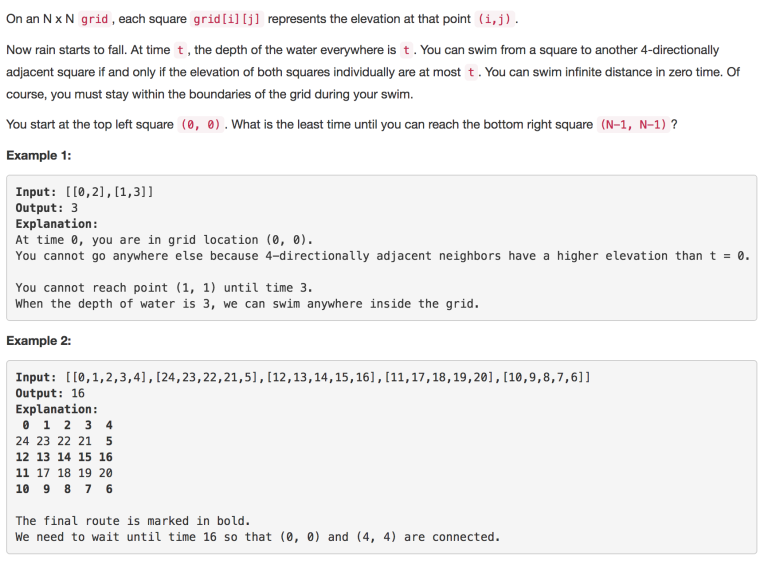
Can someone give some hints? I have absolutely no clue how heap or anything else fits into this? Thank you!
| # | User | Rating |
|---|---|---|
| 1 | tourist | 3856 |
| 2 | jiangly | 3747 |
| 3 | orzdevinwang | 3706 |
| 4 | jqdai0815 | 3682 |
| 5 | ksun48 | 3591 |
| 6 | gamegame | 3477 |
| 7 | Benq | 3468 |
| 8 | Radewoosh | 3462 |
| 9 | ecnerwala | 3451 |
| 10 | heuristica | 3431 |
| # | User | Contrib. |
|---|---|---|
| 1 | cry | 167 |
| 2 | -is-this-fft- | 162 |
| 3 | Dominater069 | 160 |
| 4 | Um_nik | 158 |
| 5 | atcoder_official | 157 |
| 6 | Qingyu | 156 |
| 7 | adamant | 151 |
| 7 | djm03178 | 151 |
| 7 | luogu_official | 151 |
| 10 | awoo | 146 |

Can someone give some hints? I have absolutely no clue how heap or anything else fits into this? Thank you!
| Name |
|---|



I'm not completely sure, but this approach should work — binary search on the final answer.
Assume the answer is <=x. Now, mark arr[i][j]=1 if grid[i][j]<=x and 0 otherwise. Build connected components of 1's in arr. Now the answer is <=x if both the source and destination are 1 and lie in the same connected component of arr. Binary search on x to get your answer.